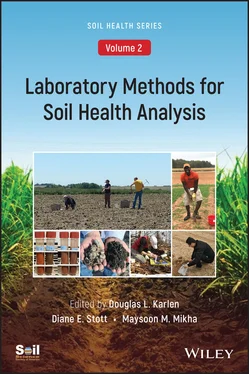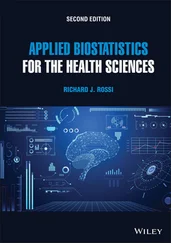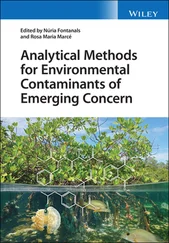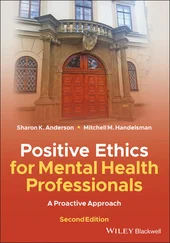Laboratory Methods for Soil Health Analysis, Volume 2
Здесь есть возможность читать онлайн «Laboratory Methods for Soil Health Analysis, Volume 2» — ознакомительный отрывок электронной книги совершенно бесплатно, а после прочтения отрывка купить полную версию. В некоторых случаях можно слушать аудио, скачать через торрент в формате fb2 и присутствует краткое содержание. Жанр: unrecognised, на английском языке. Описание произведения, (предисловие) а так же отзывы посетителей доступны на портале библиотеки ЛибКат.
- Название:Laboratory Methods for Soil Health Analysis, Volume 2
- Автор:
- Жанр:
- Год:неизвестен
- ISBN:нет данных
- Рейтинг книги:3 / 5. Голосов: 1
-
Избранное:Добавить в избранное
- Отзывы:
-
Ваша оценка:
- 60
- 1
- 2
- 3
- 4
- 5
Laboratory Methods for Soil Health Analysis, Volume 2: краткое содержание, описание и аннотация
Предлагаем к чтению аннотацию, описание, краткое содержание или предисловие (зависит от того, что написал сам автор книги «Laboratory Methods for Soil Health Analysis, Volume 2»). Если вы не нашли необходимую информацию о книге — напишите в комментариях, мы постараемся отыскать её.
Analyzing, comparing, and understanding soil health data Soil Health, Volume Two: Laboratory Methods for Soil Health Analysis
Laboratory Methods for Soil Health Analysis, Volume 2 — читать онлайн ознакомительный отрывок
Ниже представлен текст книги, разбитый по страницам. Система сохранения места последней прочитанной страницы, позволяет с удобством читать онлайн бесплатно книгу «Laboratory Methods for Soil Health Analysis, Volume 2», без необходимости каждый раз заново искать на чём Вы остановились. Поставьте закладку, и сможете в любой момент перейти на страницу, на которой закончили чтение.
Интервал:
Закладка:
Introduction
Soils contain several important C pools and play an essential role in the global C cycle. Total soil C consists of organic C and inorganic C, with organic C being part of soil organic matter (SOM). Estimated amounts of organic C stored in world soils range from 1100 to 1600 Pg, more than twice that in living vegetation (560 Pg) or the atmosphere (750 Pg) (Sundquist, 1993; Lehmann and Kleber, 2015). Most of the world’s productive soils are in cultivated agriculture, which through plow‐based management, has increased SOM loss, accelerated soil erosion, and decreased soil aggregation (Lal, 2015; Karlen and Rice 2015). Intensive tillage, low crop yield, lack of crop diversification, and excessive removal of crop residues have reduced C replenishment to the soil and thus negatively affected soil health (Rice, 2005; Bonini Pires et al., 2020). Those practices have decreased SOC by as much as 26% in the upper 30 cm and 16% in the top 100 cm of many soil profiles (Sanderman et al., 2017).
The Soil Science Society of America (SSSA) defines SOM as the organic fraction of soil exclusive of undecayed plant and animal residues (SSSA, 1997). Measurements of SOM include decayed plant residues, soil microorganisms, soil fauna, and byproducts of decomposition that lead to the production of humic substances in a process called humification (Horwath, 2007). SOM can be classified in two distinct pools, active and passive, based on their chemical composition, stage of decomposition, and turnover time (Cambardella and Elliot, 1994; Gougoulias et al., 2014). Active pools exhibit a turnover in months to years, while turnover in passive pools occurs in decades to millennium (Magdoff, 1996). Soil organic matter can also be divided into three major categories: particulate organic matter (POM), humus, and resistant organic matter (ROM) (Bell and Lawrence, 2009). Each SOM classification has a method of measurement and converts the data to SOM using conversion factors that vary. Therefore for consistency, we recommend reporting the values as organic C.
Origin and Factors Affecting SOC
Soil organic carbon is derived primarily from plant residues with transformations and storage of SOC being a function of biotic, chemical, and physical properties and processes interacting with plant residue quality or biochemistry as well as its accessibility to organisms. Plant residues are decomposed by soil microorganisms and most of the plant C is released to the atmosphere as CO 2. Approximately 10 to 20% of the C in plant residue becomes SOM, sometimes referred to as “humus.” A portion of this C can persist in soils for hundreds to thousands of years. The theoretical potential for soil C storage is a function of climate and basic soil characteristics, while the amount of C residing in the soil is a function of plant and soil management.
Tillage and organic residue input are two primary drivers influencing organic carbon levels in soils. Soil disturbance ( i.e ., tillage) disrupts soil aggregates and decreases physical protection by exposing C within soil aggregates to microbial decomposition, which results in a conversion of organic carbon to carbon dioxide.
Development of conservation agriculture practices (e.g., no‐till, permanent soil cover, and crop rotation) have increased SOC. These and other advancements in crop and soil management practices (e.g., drought and insect resistance) have the potential to restore and improve soil health. A reduction in tillage intensity, with no‐tillage being the least disruptive, allows macroaggregate formation and reduces degradation of SOC. Minimum‐ or conservation‐tillage also conserves soil C through decreased oxidation and less soil erosion than with more intensive tillage practices. Cropping intensity and diversification can also impact SOC levels by varying the amount and quality (e.g., C/N ratio) of plant residue added to the soil. Likewise, the presence of cover crop roots during the intercrop period can release exudates into the soil and contribute to greater macroaggregate formation by increasing microbial biomass and fungal networks.
In agriculture, high residue producing crops, such as corn, wheat, and sorghum tend to sustain or increase soil C. Eliminating summer fallow, a practice traditionally used in the U.S. Great Plains, can increase soil C by providing more plant material on an annual basis. In those areas where sufficient soil water is available, double cropping to produce two crops or more crops per year may be a viable practice. In grassland systems, perennial crops also tend to increase SOC because there is no‐tillage, and organic C is added through root turnover.
Functions of SOC
Soil carbon supports essential soil and associated ecosystem functions. Concentrations of SOM range from 0.2% in mineral soils to over 80% in peat soils (Smith et al., 1993). Albrecht (1938) stated “soil organic matter is one of our most important national resources… and it must be given its proper rank in any conservation policy”. Larson and Pierce (1994) listed SOC as one of five key measures of soil that included soil cation exchange capacity (CEC), bulk density (BD), water retention, and aeration.
Furthermore, although SOC comprises a small portion of agricultural soils, it significantly affects soil health (Rice et al., 1996; Doran and Zeiss, 2000; Kibblewhite et al., 2008, Bünemann et al., 2018). Currently, the USDA Natural Resource Conservation Service (NRCS) defines soil health as the capacity of a specific kind of soil to function, within natural or managed ecosystem boundaries, to sustain plant and animal productivity, maintain or enhance water and air quality, and support human health and habitation. Soil organic matter imparts many beneficial biological, chemical, and physical properties to soil, specifically improving its structure (Six et al., 2000; Dexter et al., 2008); supporting water infiltration and retention (Boyle et al., 1989; Yang et al., 2014); reducing erosion through increased infiltration, decreased runoff, and more large aggregates (King et al., 2019; Barthès and Roose, 2002); increasing crop yield through water and nutrient supply (Cambardella and Elliot (1992; Pan et al., 2009; Oldfield et al., 2018); and storing C for climate change mitigation (Paustian et al., 2016; Lal and Follett, 2009).
Biological Effects
The biological benefits of SOC primarily relate to nutrient cycling by soil microorganisms for carbon and energy. Soil microorganisms convert complex plant and animal materials into simpler compounds. The primary SOM decomposers (i.e., consumers) include bacteria, fungi, earthworms, insects, protozoa, and nematodes. All are influenced by soil microbial diversity, which is affected by SOC and the associated land management decisions. For example, no‐till results in SOC being concentrated in the topsoil surface (Doran, 1980; Lynch and Panting, 1980; Carter and Rennie, 1982; Balesdent et al., 2000). The combination of higher SOC and greater biological activity results in greater organism diversity, and potentially to greater biological control of plant diseases and pests.
Chemical Effects
Chemical benefits of SOC relate to the transformation and flow of soil nutrients, such as mineralization and immobilization of N, P, and S. The nine essential macronutrients for plant growth are C, O, H, P, K, S, Ca, and Mg. The first three are in greatest abundance within the SOM structure (Schnitzer and Khan, 1975). However, plants need N for enzymes, proteins, and chlorophyll, which are mainly derived from SOM (Schnitzer and Khan, 1975). Nearly all N in SOM is inaccessible to plants until it is converted by microbes into ammonium (NH 4) and nitrate (NO 3). The SOM is also a source of P, generally making up 15 to 80% of total soil P (Mortensen and Himes, 1964). Soil S is estimated to be 50 to 70% in or adsorbed onto SOM (Schnitzer and Khan, 1975). Conversely, K, Ca, and Mg are primarily derived from insoluble inorganic compounds and have not been demonstrated to be obtained from SOM (Schnitzer and Khan, 1975). However, K, Ca, and Mg can form complexes with SOM (Broadbent and Ott, 1957; Schnitzer and Skinner, 1963) and the capacity of soils to store mineral nutrients ( i.e ., CEC), increases with SOM.
Читать дальшеИнтервал:
Закладка:
Похожие книги на «Laboratory Methods for Soil Health Analysis, Volume 2»
Представляем Вашему вниманию похожие книги на «Laboratory Methods for Soil Health Analysis, Volume 2» списком для выбора. Мы отобрали схожую по названию и смыслу литературу в надежде предоставить читателям больше вариантов отыскать новые, интересные, ещё непрочитанные произведения.
Обсуждение, отзывы о книге «Laboratory Methods for Soil Health Analysis, Volume 2» и просто собственные мнения читателей. Оставьте ваши комментарии, напишите, что Вы думаете о произведении, его смысле или главных героях. Укажите что конкретно понравилось, а что нет, и почему Вы так считаете.












